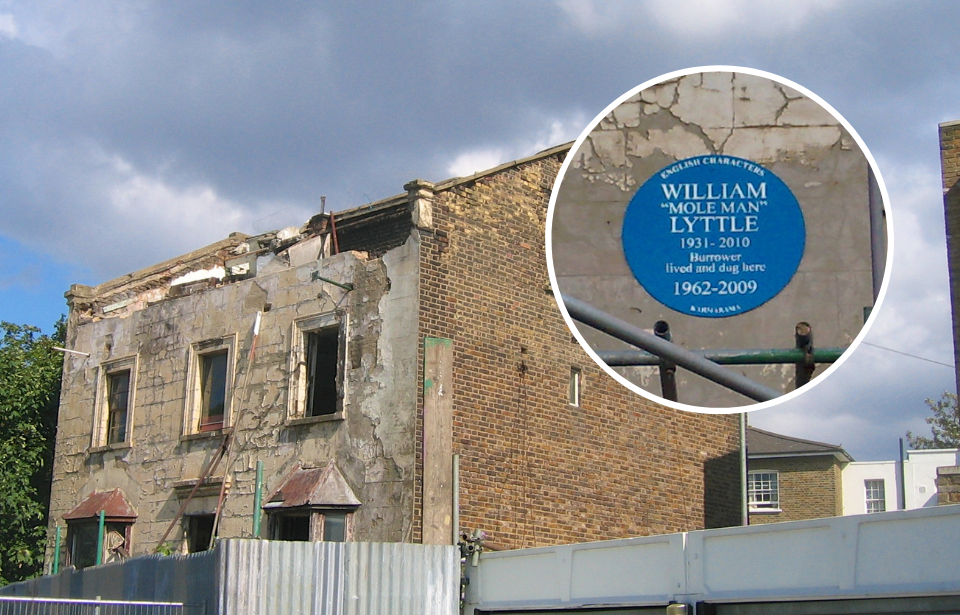At 121 Mortimer Road in Hackney, east London, there stands a property that’s become locally known as the “Mole House.” It was the haven of a man who used the property to dig… and dig… and dig. Also known as the “Mole Man,” William Lyttle spent over 40 years creating a labyrinth under his home that would eventually wreak great havoc upon the neighborhood.
The Mole Man dug an entire labyrinth under his house
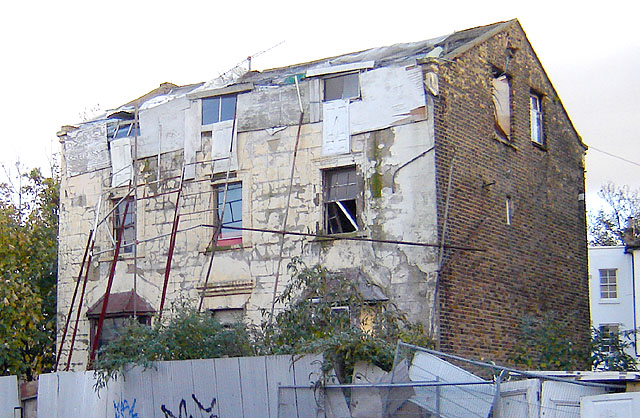
The house is dated to the Victorian period and Lyttle came into possession of the property during the 1960s. He then spent the next 40 years burrowing underneath the house. While he was still living in the home, no one was really aware of just how extensive his underground labyrinth spanned. It took years of neighborhood complaints for authorities to conduct a survey using ultrasound scanners to determine just how expansive his project had been.
The city council determined that the tunnel network expanded as deep as 26 feet in some areas and as wide as 65 feet in every direction imaginable, with its roots beginning underneath the property. His digging hit the water table, and to help him accomplish his digging aspirations, he employed a series of levers and pulleys to help move the rubble out from under the property.
His digging caused damage to the neighborhood
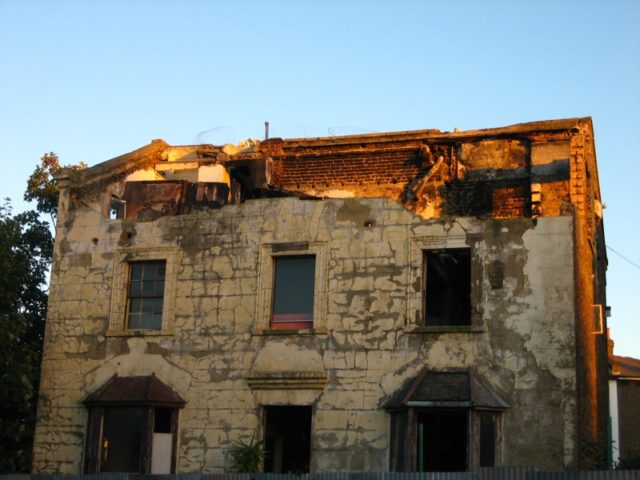
For a while, most neighbors let Lyttle dig to his heart’s content. One neighbor who lived only a few yards away from Lyttle’s house, Marc Beishon, even said that “I often used to joke that I expect him to come tunnelling up through the kitchen floor.” However, as the digging went on, it became clear that it was going to be problematic for the rest of the neighborhood.
Beishon’s wife did not see the humor in Lyttle’s odd hobby. “We moved in six years ago and we’ve been complaining to the council ever since,” she told The Guardian. “Until six weeks ago they had the audacity to tell us the house was structurally sound. The whole of the opposite street lost power one day after he tapped into a 450-volt cable.” The Beishons were not the only ones to complain. In fact, for the 40 years that Lyttle spent digging, there were constant complaints made by neighbors.
As well as hitting a 450-volt cable while digging, the labyrinth that Lyttle created caused the sidewalk in front of his house to collapse in 2001. The sinkhole was so large that it extended into the road. “You could see all the tunnels sprawling out all over the place inside – it was crazy,” explained a woman who lived near Lyttle’s property.
The Mole Man was evicted
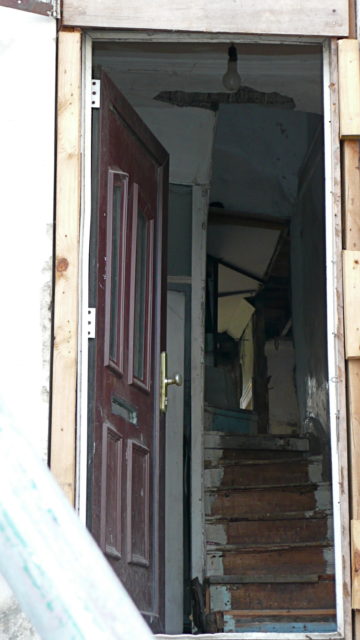
Eventually, the city council obtained a court order that allowed them to evict Lyttle from the property in 2006. Then, they could determine just how much digging he had been up to. “There has been movement in the ground,” said Phillip Wilman, a council surveyor who commented on the state of the property. “He’s fortunate a London bus is not in his front garden. The property is dangerous and liable to flooding.”
Once they realized the extend of it, it was clear that the home was no longer structurally sound and that the entire tunnel network would need to be filled with cement. First, however, approximately 40 tons of rubble and dirt had to be removed from the property. The daunting task came in at a cost of £100,000, which was billed to Lyttle as he was the one responsible for the loss of structural integrity to the property.
The council offered Lyttle temporary accommodations at a nearby hotel, but he believed that by not letting him return to his property, the city council was violating his human rights. Lyttle’s neighbors saw things differently, however, and were happy to see him removed and the building restructured. “We don’t wish the man any harm,” said William Legg, a retired civil servant who lived in the area. “He’s a hard-working man – he just doesn’t use his energy in the right way. Everyone around here just wants to see the place made safe.”
No one knows why he was digging
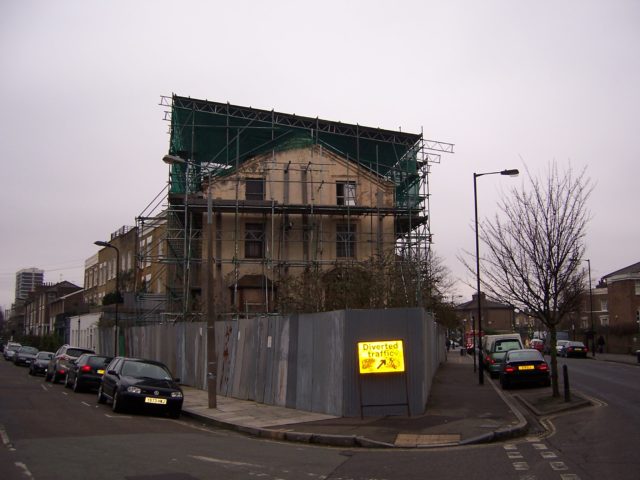
The biggest question surrounding “Mole Man” Lyttle was why he was digging in the first place. Unfortunately, no concrete answer was ever determined. Lyttle once gave a brief explanation, but it did not really explain his 40 years of quarrying. “I first tried to dig a wine cellar, and then the cellar doubled, and so on. But the idea that I dug tunnels under other people’s houses is rubbish. I just have a big basement. It’s gone down deep enough to hit the water table – that’s the lowest you can go,” he explained.
He always denied having dug so far as to be underneath neighbors’ properties, but he did admit digging “a little tunnel out into the road for the cameras. But that’s it. Tunnelling is something that should be talked about without panicking.” These statements did little to explain Lyttle’s true motivation for spending decades digging.
Lyttle died in June 2010 at the age of 79. Although many believe there was more to the situation than he suggested, his answer to the question “why?” was simple. “People are asking you what the big secret is. And you know what? There isn’t one.”
The Mole House was given new life
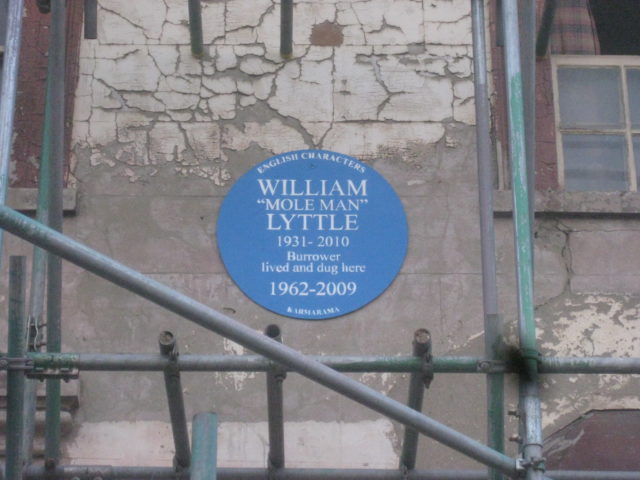
Following Lyttle’s death, the house sat abandoned and empty for years until it was finally sold at auction in 2012. It was purchased by artist Sue Webster for the price of £1.2 million and she gave the building new life as her home and art studio. Over five years, she renovated the building, paying homage to the history of the Mole Man by creating subterranean rooms inside the home and providing multiple entrances to the building.
More from us: This Neighborhood of Castles in Turkey Has Turned Into a Fairytale Ghost Town
Today, the building stands structurally intact, much to the delight of the neighborhood.
